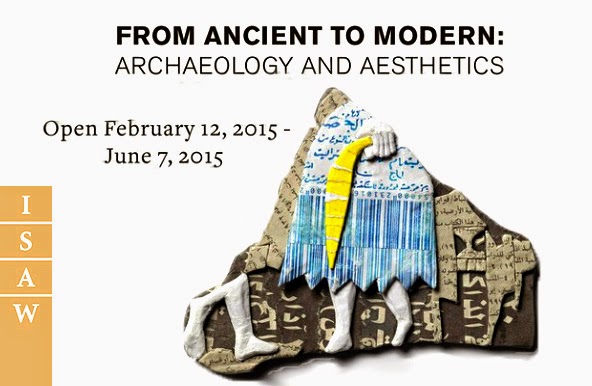The highly anticipated exhibition From Ancient to Modern: Archaeology and Aesthetics, opens at the Institute for the Study of the Ancient World (ISAW) on February 12, 2015. With some 50 outstanding ancient objects, and more than 100 related documents, photographs, and drawings, this groundbreaking exhibition examines the fascinating process through which archaeological objects are transformed from artifacts to artworks and, sometimes, to popular icons, as they move from the sites of their discovery, to be publicized by mass media and exhibited by museums.

From Ancient to Modern: Archaeology and Aesthetics displays a series of spectacular early Mesopotamian objects alongside rich documentation, opening a window onto the ways in which archaeological finds of the 1920s and 1930s were transformed from artifacts into works of art. This process raises fundamental and critical questions: What biographies were initially given to these objects by their discoverers? How were these objects filtered through the eyes and voice of the press before they were seen by the public? How were the objects’ biographies affected by or reflective of the tastes of the time? How were the items presented in museums and received by artists of the period?
And finally, how do they continue to influence artistic practice today? The goal of Archaeology and Aesthetics is to demonstrate that these biographies do not begin and end in antiquity, or span the period from their discovery to the present, but continue to be written—through scholarly inquiry and reconsideration, through museum displays and the relationships they create between object and viewer, and through the ways in which they inspire artists of our time. The modern unearthing of an object is in fact the starting point for a multiplicity of approaches, each creating a better understanding of both the artifact and the people who produced it.

These exceptional artifacts are shown with field notebooks, excavator’s diaries, archival photography, and original newspaper clippings, among other archival items, illustrating the ways in which the finds were carefully described and presented to the press, the general public, and the academic community. Selected objects are followed as they are strategically presented to an international audience, effecting their transformation from archaeological artifact to aesthetic item.
The exhibition continues with a gallery devoted to twentieth- and twenty-first-century artistic responses to ancient Mesopotamian objects. As these artifacts began to make their way into museums across pre-World War II Europe and North America, artists including Alberto Giacometti, Henry Moore, and Willem de Kooning drew inspiration from what they saw as a new kind of energy and vision inherent to the material.
Today, many artists return to the archaeological object to explore its role as a window onto human history and cultures rather than as an aesthetic object. Archaeology and Aesthetics demonstrates this approach with work by Jananne al-Ani, who was born in Kirkuk, Iraq, and lives in London, and by the Chicago-based Michael Rakowitz, who is of Iraqi-Jewish heritage. Both create art expressive of the traumatic loss of human heritage caused by wars and the spreading conflict in the Near and Middle East.
“From Ancient to Modern: Archaeology and Aesthetics” runs through June 7 at the Institute for the Study of the Ancient World.
Source: Institute for the Study of the Ancient World [February 15, 2015]